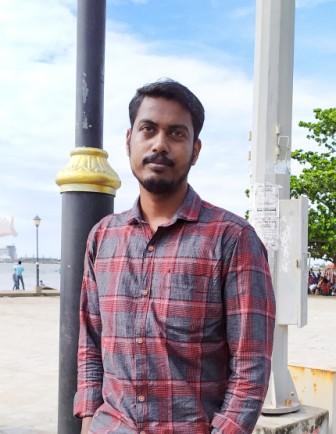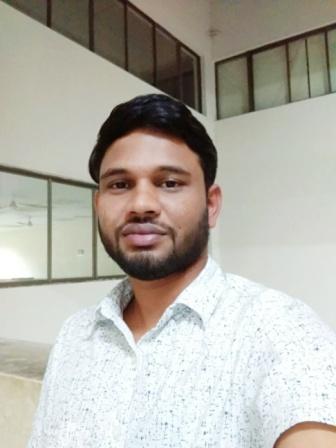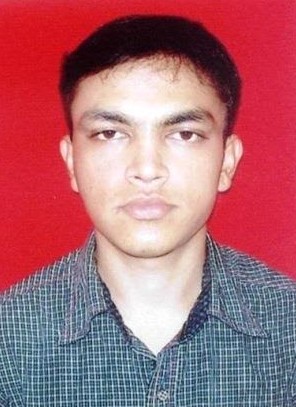Srutheesh Kannadi
 The issue of caste faced by Dalits is too complex to explain in the context of post-colonial modernity. The structural existence of caste has attained much flexibility and transformed into the behaviour of an amoeba where it appears to not follow any pre-defined principles. This illusion of caste made it invisible but at the same time it informs all kind of inhuman and discriminatory practices. The post-colonial modernity has paved the way for the ruling castes/class to maintain their hierarchies and Hindu social order by covering up themselves with the liberal/progressive masks. By creating an illusion of flexibility over caste discourses the structural position still appears to be more rigid as defined in the Hindu social order. So it is in this context that the idea of conversion needs to be revisited as a tool against the caste inequalities.
The issue of caste faced by Dalits is too complex to explain in the context of post-colonial modernity. The structural existence of caste has attained much flexibility and transformed into the behaviour of an amoeba where it appears to not follow any pre-defined principles. This illusion of caste made it invisible but at the same time it informs all kind of inhuman and discriminatory practices. The post-colonial modernity has paved the way for the ruling castes/class to maintain their hierarchies and Hindu social order by covering up themselves with the liberal/progressive masks. By creating an illusion of flexibility over caste discourses the structural position still appears to be more rigid as defined in the Hindu social order. So it is in this context that the idea of conversion needs to be revisited as a tool against the caste inequalities.
Many anti-caste philosophers and intellectuals, including Ambedkar, have suggested conversion as a method to resolve the humiliations and atrocities of the caste structured Hindu society. Ambedkar talks about both the social and spiritual aspects of conversion, especially to Buddhism, by imagining the idea of liberty, equality and fraternity. He argues in favour of conversion from Hinduism since it negates the identity of an individual and recognizes only the privileges of caste/class groups. But to talk about conversion or to get converted, the primordial state demands the Dalits to be accepted as Hindu in the beginning. So how have the Dalits become Hindu is the primary question that needs to be addressed.
By referring to the writings of academicians like Kancha Ilaiah and P Sanal Mohan, it is pretty clear that Dalits were not Hindu or never practiced the Hindu rituals from the pre-colonial to the early decades of the twentieth century. It was the elite nationalist leaders and their freedom movement which played a pivotal role in bringing the Dalits to the Hindu fold. The freedom movement and the Hindu nationalist leaders neither addressed the question of caste nor considered the rights of the oppressed castes. Also by delimiting the constitutional safeguards, welfare schemes, and developmental policies, including reservation, to the Dalits in Hindu religion, the Indian nation-state had played its own role in making Dalits into legal Hindus. Or in other words, these policies and stance of the state actually forced the Dalits to remain legally in the Hindu fold though they don’t believe in the religious practices of the Hindu social order. The reversion to Hinduism in 1950 by the major followers of PRDS, a socio-religious movement initiated by Poykayil Yohannan in Kerala, substantiate the aforesaid arguments. Dalits are actually a kind of manufactured Hindu by the Indian nation-state for securing the interests and agendas of hegemonic social groups and the ruling elites of this country. In fact, the oppressed castes, the Dalits, were left out with no other option other than being legal Hindus to engage with the state machinery and its policies. A Dalit, being ‘legal’ Hindu occupies different social position when compared with the socio-religious Hindus, the upper castes who are historically located inside the Hindu fold with respect to the rules of ‘varnasrama dharma’. It’s a fact that Dalits are also hinduised over the course of time though they were trapped in the agenda set by the nation-state and the ruling class.
So what kind of impacts did the conversion have in the larger society? Even after a commendable number of Dalit conversions from Hinduism happened in the colonial and post-colonial India, the larger society still remained unchanged when it comes to the sociological and political perspectives. Conversions have never threatened the structure of Hindu social order and also it never altered the relations of productions in the larger society. The oppressed caste groups, remaining in the religious fold, were forced to sell their labour and bodies to survive by experiencing massive exploitation from the dominant caste groups. The spatial mobility of converted Dalits is also under question even if they have occupied a different socio-religious position. The accessibility to material and non-material resources also raises serious concerns over the existence and survival of Dalits after the conversion. The ownership of land, occupying private properties, accessing education, holding bureaucratic positions etc. will further lead us to put the idea of conversion in a critically engaging position. Obviously, this doesn’t mean that conversion could not be considered as a means of resistance against the caste system. Apparently the main argument here is that the idea of conversion is more of an individualistic solution from the oppression and humiliation of the caste system rather than a salvation for the larger community. Moreover, the individualistic interests of conversion will only lead to the dissolution of Dalit identity instead of addressing the oppressions, inhumanity, humiliations, violence etc., that have been produced by the caste system historically.
There exists a notion that it is the responsibility of Dalits and other oppressed castes to fight casteism whether by converting or by finding certain other solutions. Caste was never a Dalit invention but a structural construction made by the Brahmins for securing socio-cultural capitals and to maintain hegemony in the larger society. Then what could be the reason behind the existing notion of converting only Dalits, who are the victims of Hindu social order, and urge them to escape from the caste inequalities? Why does the liberal/progressive society not consider it as the responsibility of the savarnas, who are the inventors of the caste system, to get converted and resolve the issue of caste? As Ambedkar rightly observes, it is the savarnas who should be reformed and not the Dalits. This could be more democratic and just rather than advising the Dalits, who were never Hindus historically and as per Manu dharma, to get converted. Putting the burden of fighting caste on the heads of Dalits is just another form of humiliation towards the victims of caste society.
The long history of conversions in India proves that apart from escaping humiliations in the Hindu society, it doesn’t bring much materialistic changes in the Dalit life as a larger community. It never addressed the sociological aspect of Dalit self and the construction of identity as a resistance against the caste violence. In fact, the erasure of identity is what the caste society actually wants so that they can enjoy their cultural privileges without being questioned by the oppressed communities. The structural domination and subordination constructed by the Hindu social order continue to remain stable since the conversions could not build formidable challenges to the Brahmanic hegemony. Conversion is of course methodologically anti-caste but practically it doesn’t have enough potential to address the structural violence of caste and the inequalities being produced and reproduced in the modern society. Also, intellectuals like T.M Yesudasan have observed that even the usage of word conversion itself is problematic since Dalits never belonged to any religion socially in the pre-colonial period and instead he suggested using the term ‘ascension’ to denote the new religious positions occupied by Dalits.
These arguments and realizations have made the point clear that it’s high time to reimagine the idea of conversion as a political tool against caste oppression in Hindu society. The descendants of untouchable slave castes, the modern Dalits, need to assert their identity and rights irrespective of the socio-religious position where they belong. In the awakening of the critical engagement with the notion of conversion, we must demand the state to implement constitutional safeguards and welfare schemes to Dalits in all religions and should also demand the legal construction of an independent socio-religious ‘Dalit’ category without any affiliation to Hindu religion. This would make structural changes in the hinduised life practices of Dalits which will eventually lead us to form an Ambedkarite community in its true social, political and philosophical sense.
~~~
Srutheesh Kannadi is a PhD scholar at Dept. of Mass Communication, Pondicherry University. He is working on the history of Dalit publications and community formation in colonial Kerala.










